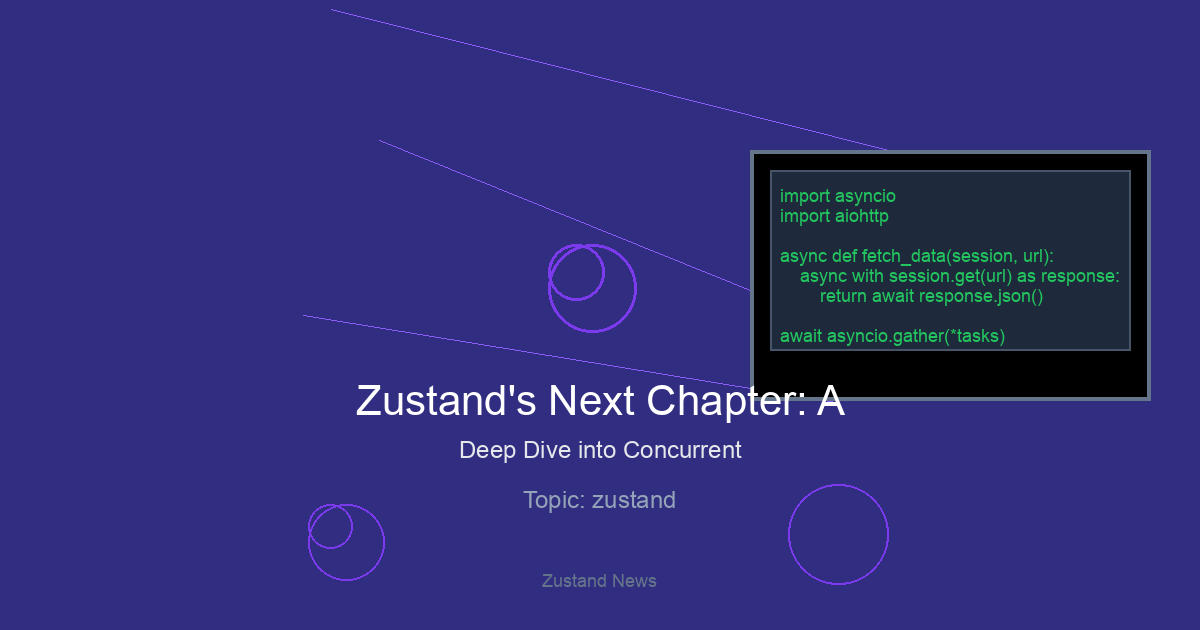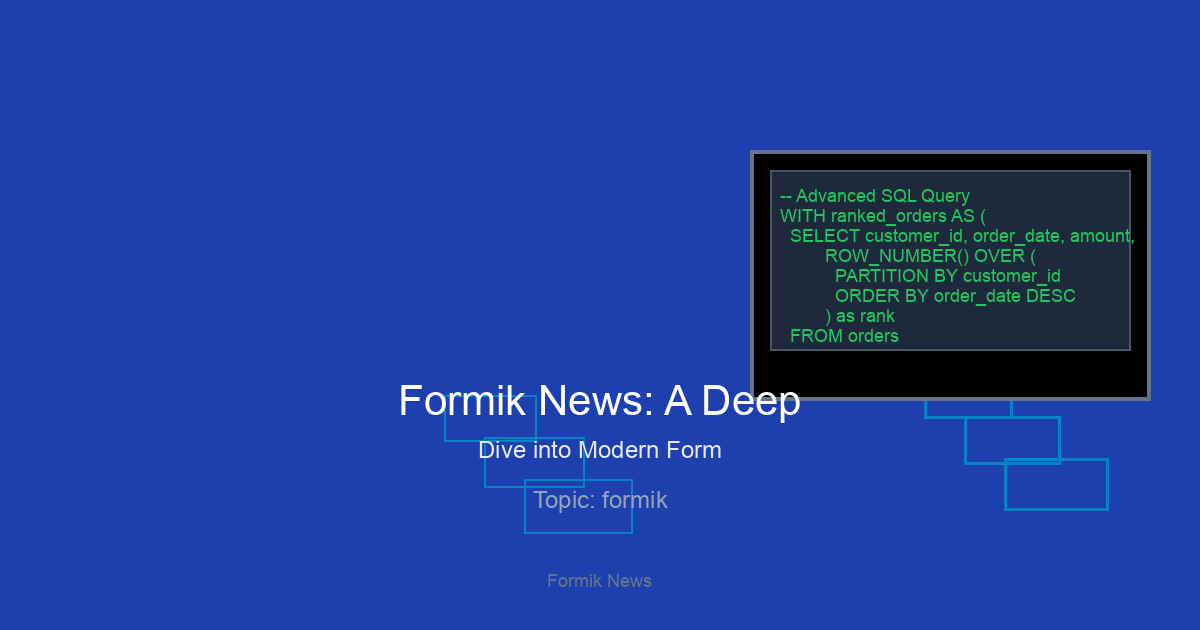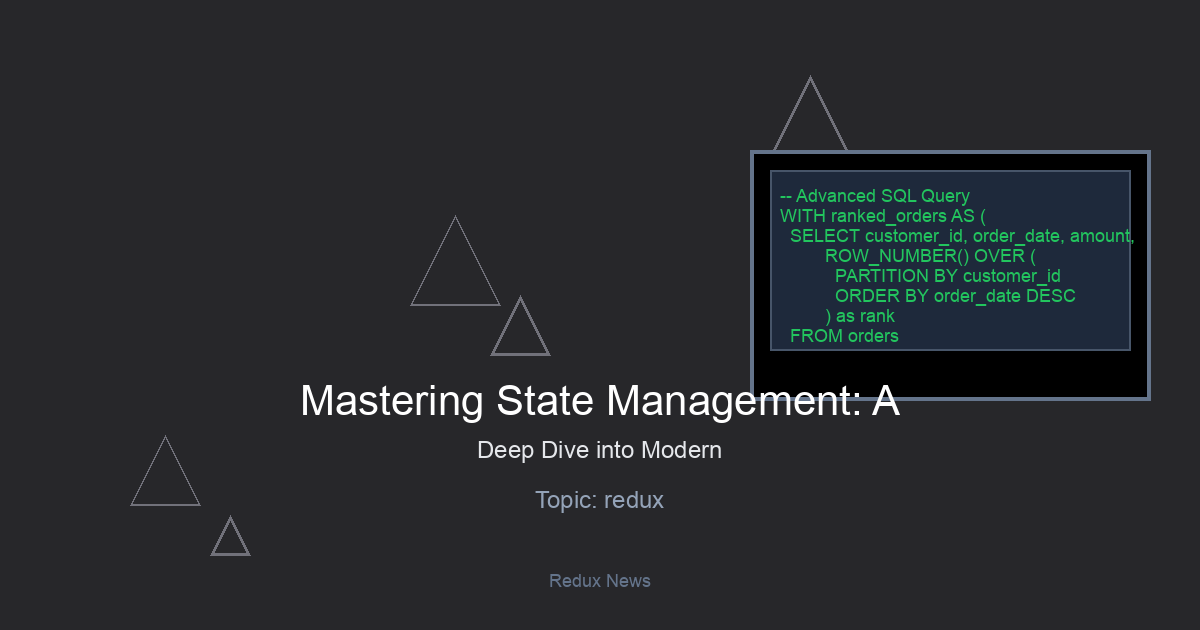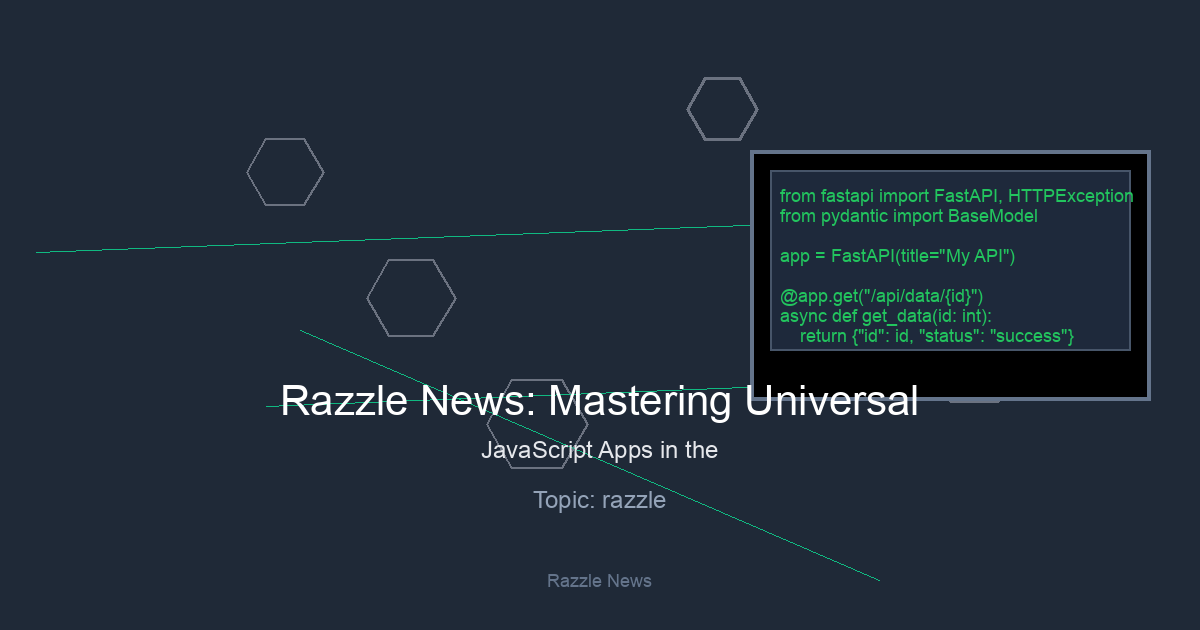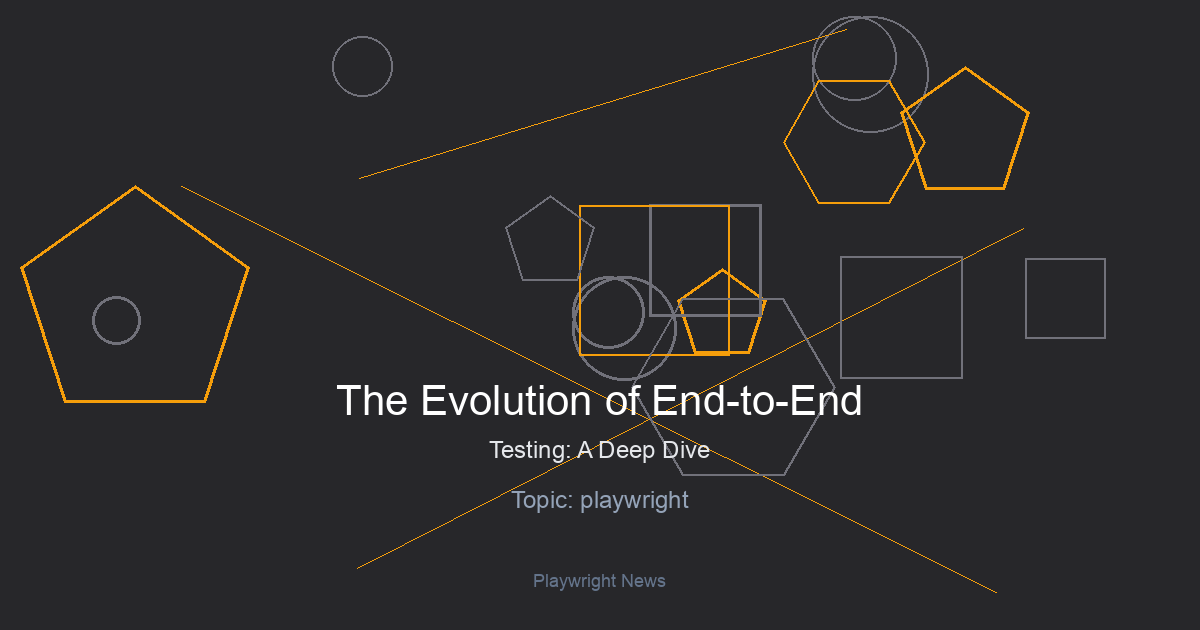The Evolution of State Management: What’s Next for Zustand?
In the ever-evolving landscape of the React ecosystem, state management remains a cornerstone of application architecture. Developers using frameworks from Next.js News to Expo News constantly seek solutions that are not only powerful but also simple, unopinionated, and performant. Zustand has carved out a significant niche by embodying these principles, offering a minimal API built on hooks that feels intuitive and “React-ish.” However, the ecosystem doesn’t stand still. With the official release of React 18 and the mainstream adoption of Concurrent Features, the requirements for state management libraries are shifting. A new era is dawning for Zustand, one that promises an even simpler developer experience while placing a laser focus on first-class support for concurrency. This upcoming evolution isn’t just an incremental update; it represents a fundamental alignment with the future of React itself, ensuring that applications built with Zustand are fast, fluid, and free from the pitfalls of outdated state management paradigms. This article explores the technical implications of this new direction, what it means for developers, and how it solidifies Zustand’s position as a forward-thinking choice in a crowded field that includes Redux News, Recoil News, and Jotai News.
Section 1: Deconstructing Zustand’s Core Philosophy and Simplicity
At its heart, Zustand’s appeal lies in its minimalism. It eschews the boilerplate often associated with older state management solutions. There are no providers to wrap your application in, no complex reducers for simple state changes, and no need for special selectors or connect functions. The entire library is built around a single hook, `create`, which generates a custom hook for your components to access and modify state. This simplicity lowers the barrier to entry and makes it incredibly fast to integrate into any project, whether it’s a new application built with Vite News or an existing one using Gatsby News.
The `create` Function: Your Store’s Foundation
Everything in Zustand begins with the `create` function. It takes a single function as an argument, which receives `set` and `get` functions. `set` is used to update the state, and `get` can be used to access the current state, which is particularly useful for calculating new state based on the old.
Let’s look at a canonical example: a simple counter store. This illustrates the fundamental API that developers have come to love.
import { create } from 'zustand';
// Define the shape of our store's state and actions
interface CounterState {
count: number;
increment: () => void;
decrement: () => void;
reset: () => void;
}
// Create the store
export const useCounterStore = create<CounterState>((set) => ({
count: 0,
increment: () => set((state) => ({ count: state.count + 1 })),
decrement: () => set((state) => ({ count: state.count - 1 })),
reset: () => set({ count: 0 }),
}));
// In your React component
function CounterComponent() {
const { count, increment, decrement } = useCounterStore();
return (
<div>
<h1>{count}</h1>
<button onClick={increment}>Increment</button>
<button onClick={decrement}>Decrement</button>
</div>
);
}This approach is clean, self-contained, and leverages TypeScript for strong typing without extra configuration. The upcoming major version aims to refine this further, potentially by improving type inference or simplifying the API for common patterns, making it even more elegant.
Comparison with Other Libraries
Unlike MobX News, which relies on observable state and reactions, or Redux News, which enforces a strict Flux architecture, Zustand provides a flexible, unopinionated model. It’s closer in spirit to Jotai News (which also comes from the same creator, Daishi Kato), focusing on a hook-based, atomic state model. However, where Jotai manages individual atoms, Zustand manages a single, cohesive state object, making it a great fit for managing global or feature-specific state that needs to be accessed from multiple, distant components in a large application, perhaps one using React Router News for navigation.
Section 2: Embracing the Concurrent Future of React
The most significant aspect of Zustand’s upcoming evolution is its deep commitment to React’s Concurrent Features. Concurrency allows React to work on multiple state updates simultaneously, prioritizing important ones (like user input) and de-prioritizing others (like background data fetches) to prevent the UI from freezing. This introduces a challenge known as “tearing,” where different components in the app might render with different versions of the same state during a single render pass. This can lead to inconsistent and buggy UIs.
`useSyncExternalStore`: The Key to Concurrency
Modern state management libraries solve tearing by using the `useSyncExternalStore` hook provided by React. This hook is specifically designed to allow external stores (like Zustand, Redux, or React Query News) to safely subscribe to changes and integrate with React’s concurrent rendering model. Zustand already uses this hook under the hood, which gives it a massive advantage. The renewed focus on concurrency means this integration will become even more robust and optimized, ensuring that Zustand stores behave predictably and performantly with concurrent features like `startTransition`.
The `startTransition` API allows developers to mark certain state updates as non-urgent. React can then interrupt the rendering of these updates if a more urgent one comes in. Let’s see how Zustand will seamlessly work within this paradigm.
import { create } from 'zustand';
import { useState, useTransition, ChangeEvent } from 'react';
// A store for our filterable list
interface ListState {
items: string[];
filteredItems: string[];
filter: (query: string) => void;
}
const allItems = Array.from({ length: 10000 }, (_, i) => `Item ${i + 1}`);
const useListStore = create<ListState>((set) => ({
items: allItems,
filteredItems: allItems,
filter: (query: string) => {
set({
filteredItems: allItems.filter(item => item.toLowerCase().includes(query.toLowerCase()))
});
}
}));
// A component that uses the store with a transition
function FilterableList() {
const [inputValue, setInputValue] = useState('');
const [isPending, startTransition] = useTransition();
const { filteredItems, filter } = useListStore();
const handleChange = (e: ChangeEvent<HTMLInputElement>) => {
const query = e.target.value;
setInputValue(query); // High-priority update: update the input field immediately
// Low-priority update: wrap the expensive filtering logic in a transition
startTransition(() => {
filter(query);
});
};
return (
<div>
<input type="text" value={inputValue} onChange={handleChange} placeholder="Filter items..." />
{isPending && <p>Filtering...</p>}
<ul style={{ opacity: isPending ? 0.5 : 1 }}>
{filteredItems.slice(0, 100).map(item => (
<li key={item}>{item}</li>
))}
</ul>
</div>
);
}In this example, updating the input field is immediate, providing instant user feedback. The expensive filtering operation, which updates the Zustand store, is wrapped in `startTransition`. Because Zustand is built for concurrency, React can handle this gracefully, keeping the UI responsive even while filtering a large list. This is a game-changer for user experience in data-heavy applications, common in projects built with frameworks like Remix News or Blitz.js News.
Section 3: Advanced Patterns and Ecosystem Integration
Beyond the basics, Zustand’s power is extended through middleware and its ability to integrate with the broader React and React Native News ecosystems. The new version will likely maintain and enhance this flexibility, ensuring it remains a versatile tool for complex applications.
Leveraging Middleware for Enhanced Functionality
Zustand supports middleware to add capabilities like persistence, developer tools integration, and complex state logic. The `persist` middleware, for example, makes it trivial to save store state to `localStorage` or `AsyncStorage`.
import { create } from 'zustand';
import { persist, createJSONStorage } from 'zustand/middleware';
interface SettingsState {
theme: 'light' | 'dark';
toggleTheme: () => void;
}
export const useSettingsStore = create<SettingsState>()(
persist(
(set) => ({
theme: 'light',
toggleTheme: () =>
set((state) => ({
theme: state.theme === 'light' ? 'dark' : 'light',
})),
}),
{
name: 'app-settings-storage', // unique name
storage: createJSONStorage(() => localStorage), // (optional) default: localStorage
}
)
);
// This store will now automatically persist its state across page reloads.
// It's equally effective in React Native using AsyncStorage.
This pattern is invaluable for storing user preferences or session data. The simplicity of adding such powerful features is a key reason developers choose Zustand. It integrates well with UI component libraries like React Native Paper News or Tamagui News, allowing you to persist theme settings across an entire application.
Testing Your Zustand Stores
Because Zustand stores are just simple objects with functions, they are incredibly easy to test outside of a React component context using tools like Jest News. For integration tests, you can use React Testing Library News to render components and assert that state changes are reflected correctly in the UI. For end-to-end testing, tools like Cypress News or Playwright News can interact with your application as a user would, validating the state management logic from the outside in.
// Example test for our counter store using Jest
import { useCounterStore } from './stores/counterStore';
import { act } from '@testing-library/react';
describe('useCounterStore', () => {
// Reset store state before each test
beforeEach(() => {
act(() => {
useCounterStore.getState().reset();
});
});
it('should have an initial count of 0', () => {
const { count } = useCounterStore.getState();
expect(count).toBe(0);
});
it('should increment the count', () => {
act(() => {
useCounterStore.getState().increment();
});
const { count } = useCounterStore.getState();
expect(count).toBe(1);
});
it('should decrement the count', () => {
// First, set a starting count
act(() => {
useCounterStore.getState().increment();
useCounterStore.getState().increment();
});
act(() => {
useCounterStore.getState().decrement();
});
const { count } = useCounterStore.getState();
expect(count).toBe(1);
});
});The `act` utility from React Testing Library ensures that state updates are processed before you make assertions, which is crucial for testing hook-based logic.
Section 4: Best Practices and Performance Optimization
While Zustand is performant by default, following best practices can ensure your application remains snappy as it grows in complexity. The focus on concurrency in the new version highlights the importance of efficient rendering.
Use Selectors to Prevent Unnecessary Renders
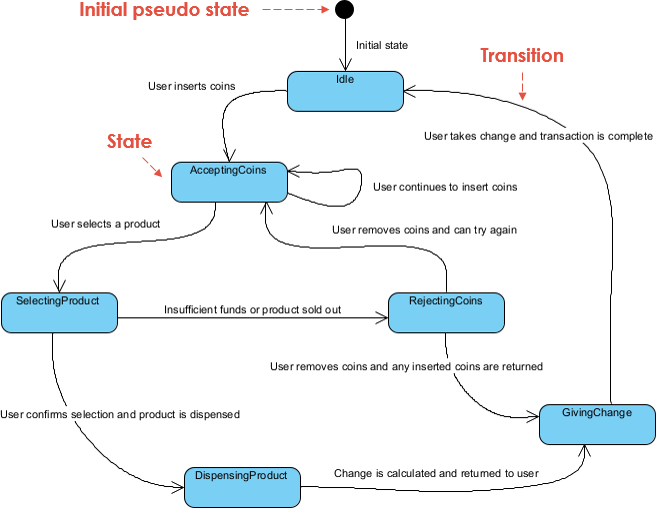
By default, a component using a Zustand store will re-render whenever any part of the state changes. To optimize this, you can provide a selector function to the hook. This function tells Zustand to only re-render the component if the value returned by the selector has changed.
import { useUserStore } from './stores/userStore';
import shallow from 'zustand/shallow';
// BAD: This component re-renders if user.id or user.email changes, even if username doesn't.
function UserWelcome() {
const { user } = useUserStore();
return <h1>Welcome, {user.username}!</h1>;
}
// GOOD: This component only re-renders if the username string itself changes.
function OptimizedUserWelcome() {
const username = useUserStore((state) => state.user.username);
return <h1>Welcome, {username}!</h1>;
}
// BEST for multiple values: Use a shallow equality check to prevent re-renders
// if the object containing the values is recreated but the values are the same.
function UserProfile() {
const { username, email } = useUserStore(
(state) => ({
username: state.user.username,
email: state.user.email,
}),
shallow // The shallow equality check function
);
return (
<div>
<p>Username: {username}</p>
<p>Email: {email}</p>
</div>
);
}Using selectors is the single most important performance optimization technique in Zustand. It’s especially critical in applications with complex, frequently changing state, such as those with real-time data visualization using libraries like Recharts News or interactive animations with React Spring News or Framer Motion News.
Splitting Stores for Better Organization
While you can put all your state in one giant store, it’s often better to split it into logical domains. For example, have a `useUserStore`, a `useCartStore`, and a `useSettingsStore`. This makes the codebase easier to manage, test, and reason about, especially in large teams working on complex applications within frameworks like RedwoodJS News.
Conclusion: The Path Forward
The upcoming major version of Zustand signals a clear and exciting direction. By further simplifying its already elegant API and doubling down on a robust, concurrency-first architecture, it is positioning itself not just as a solution for today’s React, but as a foundational tool for the future of the framework. For developers, this means a state management library that gets out of the way, allowing them to build highly performant, responsive user interfaces that can take full advantage of React 18’s most powerful features. Whether you’re building a complex web app with Next.js News, a cross-platform mobile app with React Native News, or anything in between, Zustand’s evolution ensures it will remain a top-tier choice for pragmatic and forward-thinking state management. The focus is clear: simplicity, performance, and seamless integration with the future of React.

